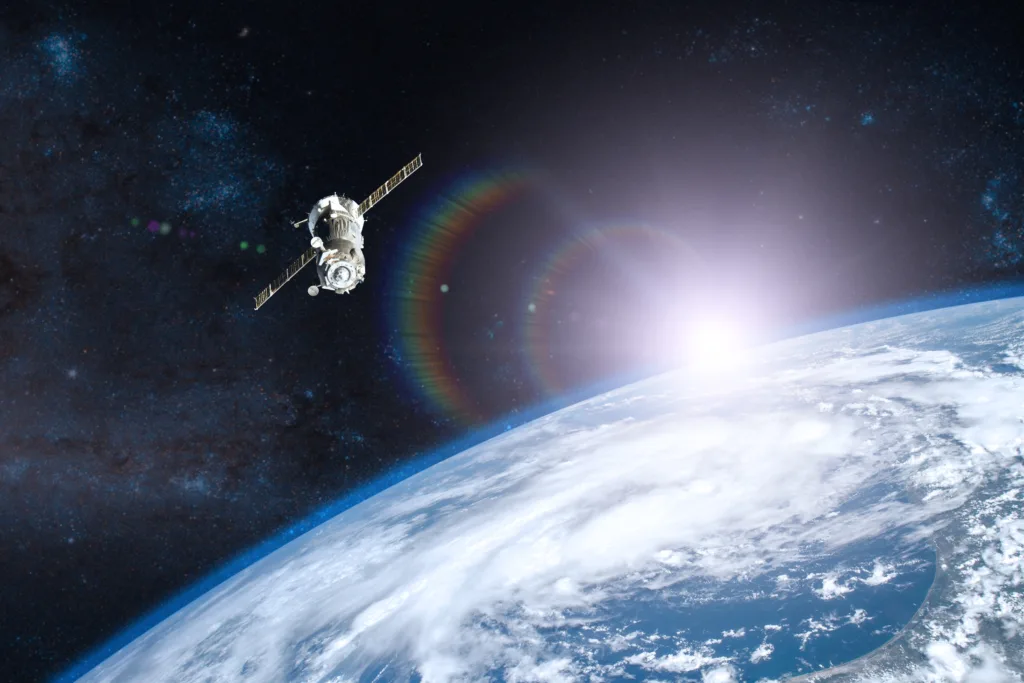Daily News
Space Force Faces New Challenge: Tracking Debris from Intelsat 33e Breakdown
The fragmentation of the Intelsat 33e satellite raises concerns about space debris and safety, emphasizing the need for responsible space management and collaborative efforts to maintain a sustainable orbital environment. Space Force to monitor.

In a notable development for the satellite industry, the recent fragmentation of the Intelsat 33e communication satellite has sparked significant concerns over space debris management. As this satellite, a vital link for communication services in Europe, Africa, and sections of the Asia-Pacific, met an untimely demise, the implications for space safety and sustainability have become increasingly urgent.
The Incident
Intelsat 33e suffered a crippling power loss due to an anomaly, rendering it inactive in its geostationary orbit. Efforts made by Intelsat, in collaboration with Boeing, the satellite’s manufacturer, have been futile, making the satellite irrecoverable. As a direct consequence, the U.S. Space Force is now tasked with managing and tracking 20 newly formed debris pieces—an endeavor crucial to preventing further orbital hazards.
The cause of Intelsat 33e’s failure is yet to be confirmed, but speculation suggests a propulsion system malfunction. This incident echoes a similar fate that befell Intelsat-29e in 2019, attributed to either a meteoroid strike or possible wiring issues. Such events highlight the unpredictable nature of space operations and the resultant challenges.
Risks and Implications
Geostationary orbit, where these incidents occurred, is particularly sensitive. With satellites positioned to maintain a fixed point relative to the Earth, any increase in debris could severely limit maneuverability and heighten collision risks. Each new debris field exacerbates the congestion in these critical orbital paths, increasing the threat to operational satellites and, by extension, to the services they provide to millions globally.
Moving Forward
In light of these challenges, the space community is called upon to fortify its commitment to space sustainability. Satellite operators must adopt strategies that prioritize the careful deployment and maintenance of satellites to avoid contributing to the burgeoning space debris problem. This incident underscores the fragility of space infrastructure and the necessity for methodical, responsible practices.
Maintaining space situational awareness is essential. Vigilant tracking and management of debris can mitigate collision risks, ensuring the safety and functionality of existing and future missions. Such measures not only protect the substantial investments in space infrastructure but also guarantee the continuity of vital services reliant on satellite communication.
Collaborative Efforts for a Sustainable Space Environment
Addressing the challenges posed by space debris requires a collective effort. Satellite operators, governments, and international organizations must collaborate to develop and implement solutions that enhance the resilience and sustainability of space operations. By sharing data, adopting standardized practices, and investing in technologies for debris monitoring and removal, stakeholders can work towards a safer, more sustainable orbital environment.
The breakup of Intelsat 33e serves as a stark reminder of the complexities within space exploration and the need for proactive measures. Only through collective vigilance and innovation can we hope to protect the orbital space environment, ensuring that it remains a viable domain for technological advancement and discovery for generations to come.
Related article:
Newsweek: https://www.newsweek.com/satellite-orbiting-earth-broken-intelsat-lost-1972438
Space News: https://spacenews.com/intelsat-33e-loses-power-in-geostationary-orbit/
The science section of our news blog STM Daily News provides readers with captivating and up-to-date information on the latest scientific discoveries, breakthroughs, and innovations across various fields. We offer engaging and accessible content, ensuring that readers with different levels of scientific knowledge can stay informed. Whether it’s exploring advancements in medicine, astronomy, technology, or environmental sciences, our science section strives to shed light on the intriguing world of scientific exploration and its profound impact on our daily lives. From thought-provoking articles to informative interviews with experts in the field, STM Daily News Science offers a harmonious blend of factual reporting, analysis, and exploration, making it a go-to source for science enthusiasts and curious minds alike. https://stmdailynews.com/category/science/